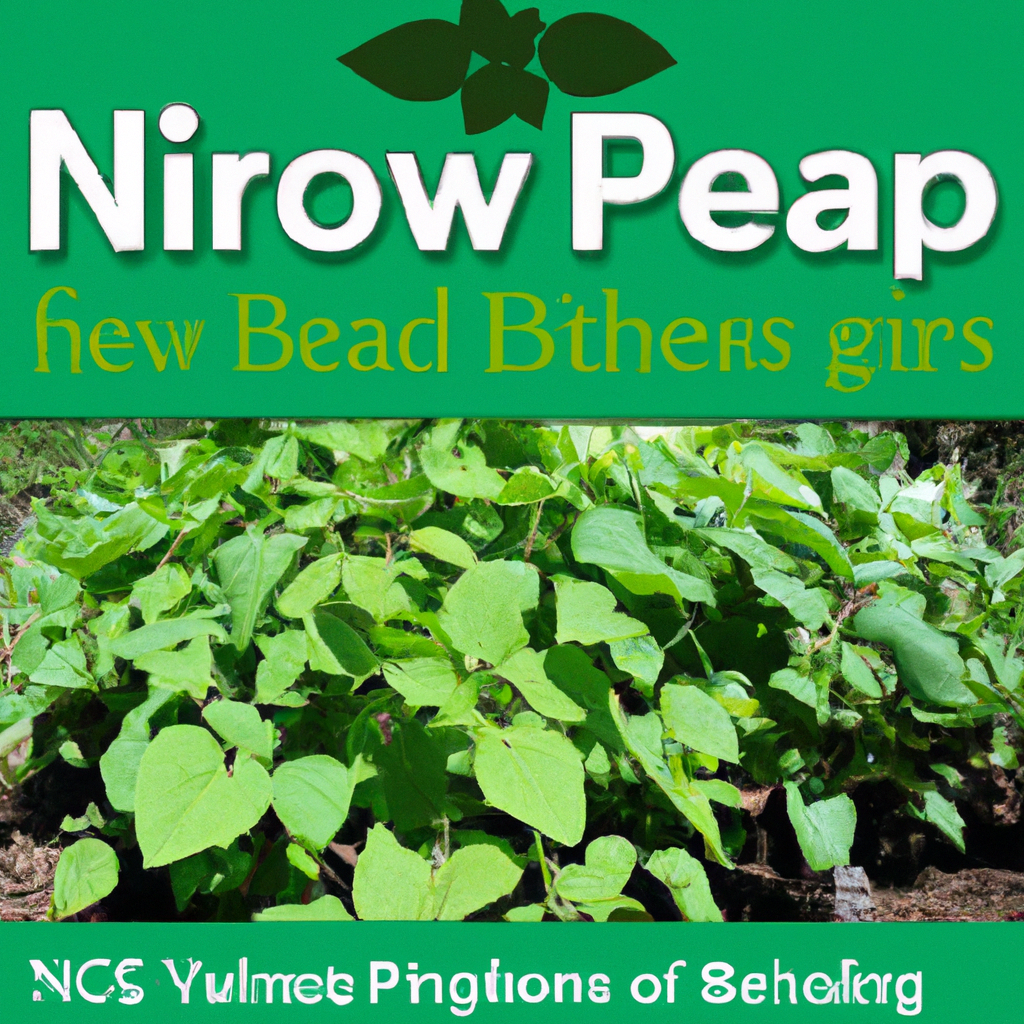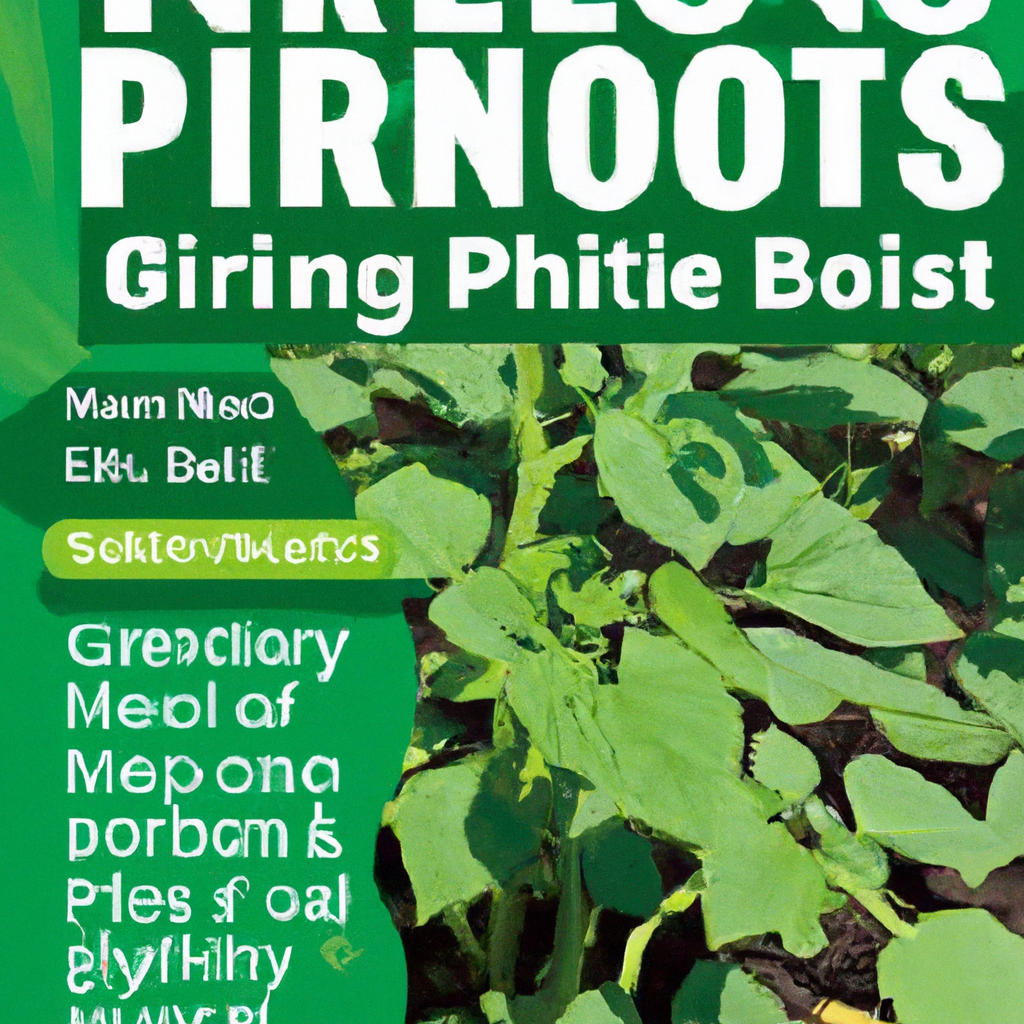Looking to take your vegetable garden to the next level? Look no further than Nitro Phos, the ultimate growth enhancer for your plants. In this comprehensive guide, we will explore how Nitro Phos can revolutionize the way you care for your vegetable garden. From understanding its benefits to learning how to properly apply it, you’ll find everything you need to know to boost your vegetable garden’s growth and yield. So grab your gardening gloves and let’s dive into the world of Nitro Phos!
Boosting Your Vegetable Garden’s Growth with Nitro Phos: A Complete Guide
Choosing the Right Type of Nitro Phos
When it comes to choosing the right type of Nitro Phos for your vegetable garden, it’s important to understand the role of nitrogen and phosphorus in plant growth. Nitrogen is essential for leaf and stem development, while phosphorus is crucial for root development and flower production.
To determine the nitrogen-to-phosphorus ratio that is best for your garden, consider the specific needs of your vegetable plants. Leafy greens and plants that require a lot of foliage growth, such as lettuce and spinach, thrive with higher nitrogen levels. On the other hand, root vegetables, like carrots and beets, benefit from higher phosphorus levels for optimal root development.
Researching different Nitro Phos products is also essential to find the one that suits your garden’s needs. Look for reputable brands and read customer reviews to get an idea of their effectiveness. Consider factors like the concentration of nitrogen and phosphorus, as well as any additional nutrients or additives that may benefit your plants.

Preparing Your Vegetable Garden for Nitro Phos Application
Before applying Nitro Phos to your vegetable garden, it’s important to prepare the soil to ensure maximum effectiveness. Testing the soil’s pH and nutrient levels is a crucial first step. This will help you identify any deficiencies and allow you to adjust accordingly.
Adding compost and organic matter is another vital step in preparing your garden. These materials improve soil structure, add essential nutrients, and increase water retention. Adding them to the soil before applying Nitro Phos ensures that your plants will receive the maximum benefit from the fertilizer.
Removing weeds and unwanted plants is essential to create an environment that allows your vegetable plants to thrive. Weeds compete with your vegetables for nutrients, water, and sunlight, so it’s important to clear them out before applying any fertilizer.
Creating a proper drainage system is also crucial for the overall health of your vegetable garden. Poor drainage can lead to waterlogged roots, which can cause root rot and other issues. Ensure that your garden has proper pathways for water to drain away, preventing water from pooling around your plants.
Timing and Frequency of Nitro Phos Applications
Timing is key when it comes to applying Nitro Phos to your vegetable garden. It’s important to identify the best time for application to ensure optimal results. This can vary depending on the specific growing season of your vegetables.
Understanding your vegetables’ growing season is crucial in determining the ideal application schedule. Some vegetables, like tomatoes and peppers, benefit from regular applications throughout their growing season. Others, such as root vegetables, may only need a single application before planting.
It’s important to avoid excessive Nitro Phos use, as this can lead to nutrient imbalances and potential harm to your plants. Follow the instructions provided by the manufacturer and consider the specific needs of your plants when determining the appropriate frequency of applications.

Applying Nitro Phos to Your Vegetable Garden
Using the correct application method is essential to ensure that Nitro Phos is distributed evenly and absorbed by your plants. Follow the instructions provided by the manufacturer, whether that’s broadcasting, banding, or side-dressing the fertilizer.
Calculating the right amount of Nitro Phos is crucial to avoid over or under-application. This can be determined based on your soil test results, the specific needs of your plants, and the recommendations provided by the manufacturer. Using too little may not provide enough nutrients, while using too much can lead to nutrient imbalances and potential harm to your plants.
Mixing Nitro Phos with water or soil before application can help distribute the fertilizer evenly and promote proper absorption. Follow the manufacturer’s instructions on how to mix the fertilizer and apply it to your garden.
Taking precautions for application is important for your safety and the health of your plants. Wear appropriate protective clothing and gear, such as gloves and goggles, to prevent any contact irritation. Read the safety instructions provided by the manufacturer and follow them carefully to avoid any mishaps.
Monitoring the Effects of Nitro Phos on Your Vegetables
After applying Nitro Phos to your vegetable garden, it’s important to monitor the effects on your plants. Observing growth and yield changes can help you determine the effectiveness of the fertilizer. Look for increased vigor, improved foliage, and an overall healthier appearance of your plants.
Checking for signs of over or under-fertilization is crucial to prevent any potential harm to your plants. Over-fertilization can lead to nutrient imbalances, burning of foliage, or stunted growth. Under-fertilization may result in slow or stunted growth, yellowing leaves, and reduced yields. Adjust the application rate or frequency if necessary to maintain a healthy balance.
Measuring soil nutrient levels periodically can provide valuable information about the effectiveness of Nitro Phos and allow you to make adjustments as needed. Regular soil testing can help you identify any deficiencies or excesses and take appropriate action.
Making adjustments based on plant response is important for fine-tuning your fertilizer application. If you notice any specific issues, such as nutrient deficiencies or excesses, take action accordingly. This may involve adjusting the dosage, timing of applications, or considering supplementary fertilizers or amendments.

Additional Tips for Maximizing Nitro Phos Benefits
Practicing proper watering techniques is essential for maximizing the benefits of Nitro Phos. Water your vegetable garden deeply and infrequently, allowing the soil to dry slightly between watering. This helps promote nutrient uptake and prevents waterlogged conditions.
Implementing crop rotation strategies can also benefit your vegetable garden. Rotating crops helps prevent the buildup of pests and diseases, reduces nutrient depletion, and enhances overall soil health. This can improve the effectiveness of Nitro Phos and ensure the long-term productivity of your garden.
Using Nitro Phos in combination with other fertilizers can provide a balanced nutrient profile for your plants. Consider using organic fertilizers or amendments, such as compost or bone meal, alongside Nitro Phos to provide additional nutrients and improve soil fertility.
Maintaining a healthy garden environment is essential for the long-term success of your vegetable garden. This includes proper weed management, pest control, and disease prevention. Regularly inspect your plants for any signs of pests or diseases and take appropriate action to protect your plants.
Common Mistakes to Avoid in Nitro Phos Application
Applying Nitro Phos on non-vegetable plants can lead to nutrient imbalances and potential harm. Nitro Phos is specifically formulated for vegetable plants, so it’s important to use it accordingly. Consider using different fertilizers or amendments for non-vegetable plants.
Exceeding recommended Nitro Phos dosages can do more harm than good. Follow the instructions provided by the manufacturer and avoid the temptation to over-apply. Over-fertilization can lead to nutrient imbalances and potential harm to your plants.
Using Nitro Phos without soil testing can result in ineffective or improper application. Soil testing provides valuable insights into the specific needs of your plants and allows you to adjust accordingly. Take the time to test your soil and use the results to make informed decisions about Nitro Phos application.
Neglecting other essential plant nutrients is a common mistake when using Nitro Phos. While Nitro Phos provides nitrogen and phosphorus, it’s important to ensure that your plants receive a balanced nutrient profile. Considering supplementary fertilizers or amendments can help provide any additional nutrients your plants may need.

Safety Precautions when Handling Nitro Phos
When handling Nitro Phos, it’s important to prioritize safety to prevent any accidents or injuries. Wear appropriate protective clothing and gear, such as gloves, goggles, and a mask, to protect yourself from any potential contact with the fertilizer.
Storing Nitro Phos properly is crucial to maintain its effectiveness and prevent any accidents. Ensure that the fertilizer is stored in a cool, dry place away from direct sunlight and moisture. Keep it tightly sealed in its original packaging to prevent any spills or leaks.
Keep children and pets away from Nitro Phos to prevent any accidental ingestion or contact. Store the fertilizer out of their reach and ensure that they are not present during application or storage.
Disposing of unused Nitro Phos safely is essential to prevent any harm to the environment. Follow local guidelines and regulations for proper disposal. Avoid dumping Nitro Phos in water bodies or near plants, and instead, dispose of it in compliance with your local waste disposal regulations.
Evaluating the Cost-Effectiveness of Nitro Phos
When considering the cost-effectiveness of Nitro Phos, comparing the price of different products is an important factor. Look for reputable brands that offer good value for money. Consider the concentration of nutrients, package size, and any additional features or benefits.
It’s crucial to consider the long-term benefits of using Nitro Phos in your vegetable garden. The increased growth, yield, and overall health of your plants can result in a greater return on investment over time. Factor in the potential savings on purchasing vegetables from the market and the satisfaction of growing your own.
Calculating the required amount of Nitro Phos for your garden is important in determining the cost and effectiveness. Consider the size of your garden, the specific needs of your plants, and the recommended application rate provided by the manufacturer. This will give you a better estimate of the quantity required.
Exploring alternative organic fertilizers is another option to consider when evaluating the cost-effectiveness of Nitro Phos. There are various organic fertilizers available that can provide similar benefits, such as compost, manure, or bone meal. Research and compare different options to identify the most suitable choice for your garden.

Common Questions and Answers about Nitro Phos
Is Nitro Phos Suitable for Organic Gardening?
Yes, Nitro Phos can be suitable for organic gardening if the product is certified organic. Look for Nitro Phos products that carry the organic certification to ensure that they meet the standards and requirements of organic gardening.
Can Nitro Phos Be Used on Flower Gardens?
While Nitro Phos is primarily formulated for vegetable gardens, it can also be used on flower gardens. However, be cautious with the nitrogen-to-phosphorus ratio and adjust accordingly to meet the specific needs of your flowers. Some flowers may require higher nitrogen levels for foliage development, while others may benefit from higher phosphorus levels for flower production.
How Long Does It Take for Nitro Phos to Show Results?
The time it takes for Nitro Phos to show results can vary depending on various factors, including the specific needs of your plants, soil conditions, and weather. In general, you can expect to see initial results within a few weeks after application. However, it may take longer for more significant changes in growth and yield to become evident.
What If I Accidentally Over-Apply Nitro Phos?
If you accidentally over-apply Nitro Phos, it’s important to take immediate action to prevent any potential harm to your plants. Flush the area with water to help dilute the excess fertilizer and minimize its effects. Monitor your plants closely for any signs of nutrient imbalances or damage and make any necessary adjustments to future applications.
In conclusion, Nitro Phos can be a valuable tool in boosting the growth and productivity of your vegetable garden. By understanding the nitrogen-to-phosphorus ratio, preparing your garden properly, timing and applying the fertilizer correctly, and monitoring its effects on your plants, you can maximize the benefits of Nitro Phos. Remember to take safety precautions when handling the fertilizer and evaluate its cost-effectiveness based on its price, long-term benefits, and alternative organic fertilizers. By following these guidelines, you can ensure a thriving and fruitful vegetable garden with the help of Nitro Phos.
